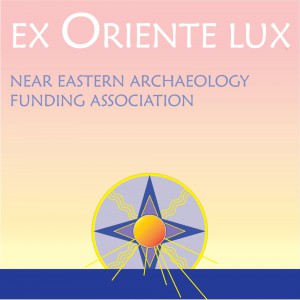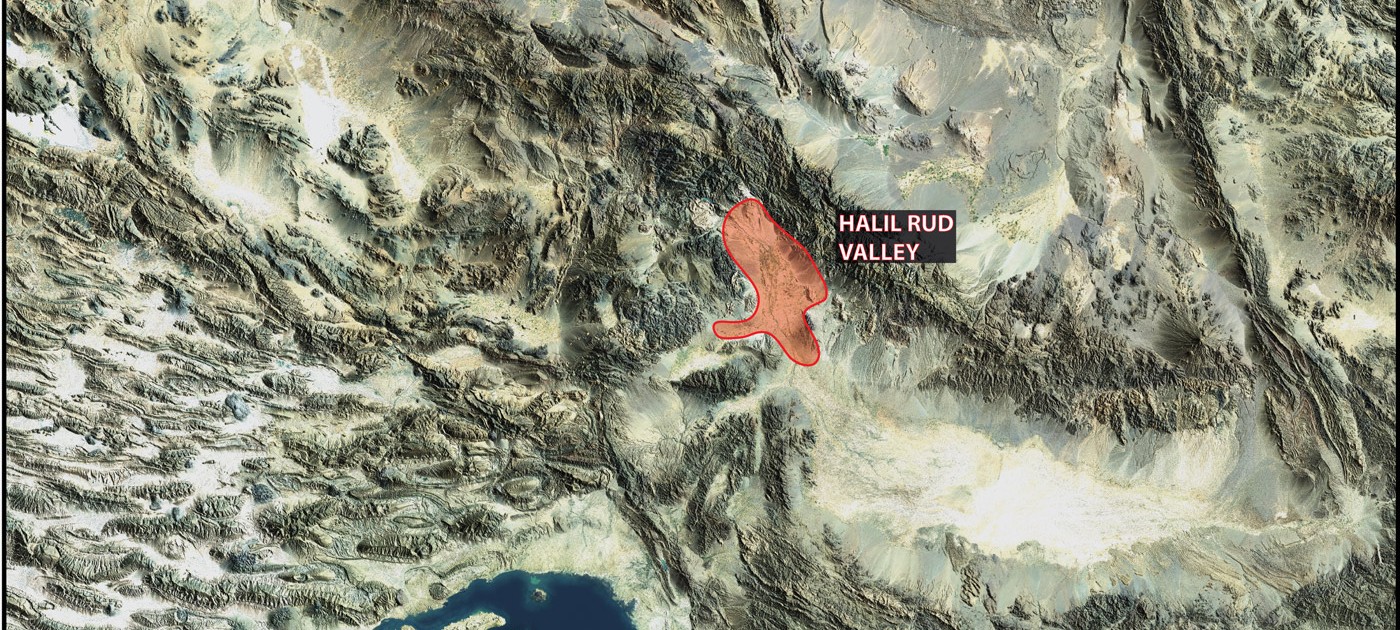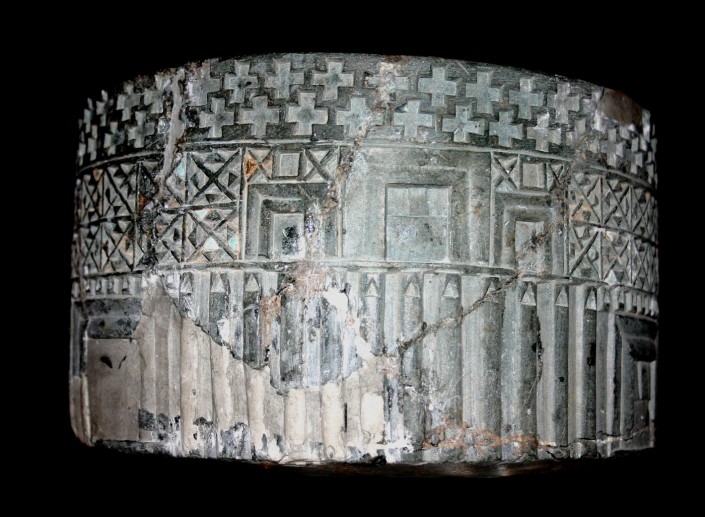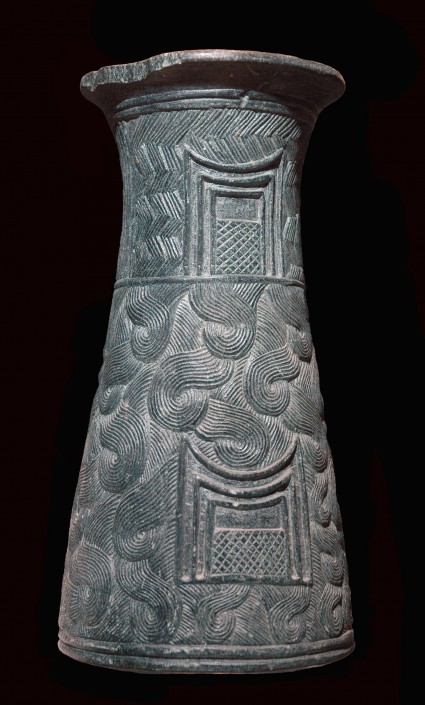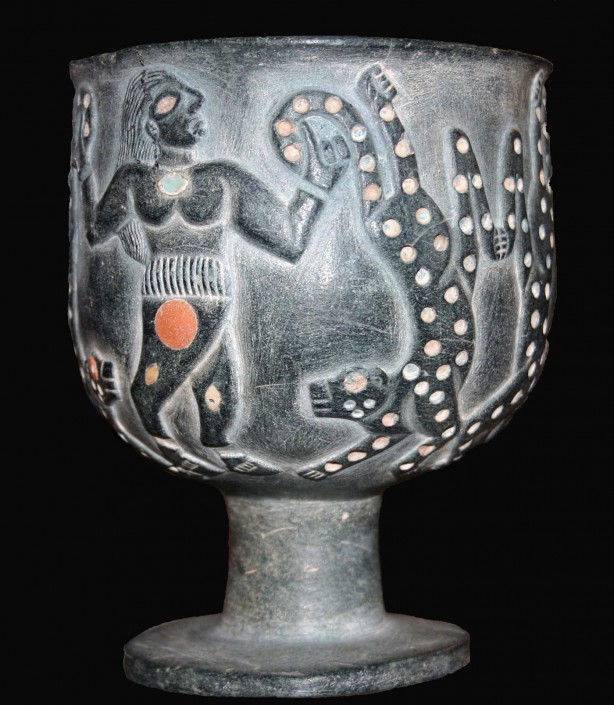What is this project’s purpose ?
The aim of this project is to investigate a famous class of objects, long known in Near Eastern archaeology from Syria to Indus : the 3rd millennium BC ‘intercultural / série ancienne’ style carved chlorite statuettes, seals, and vessels. Large numbers of these artefacts were found during a phase of massive looting at the beginning of the 2000’s in the Halil Rud / Jiroft valley in southern Iran, in what was one of the central settlements of the ancient State of Marhashi, where they appear to have been manufactured. Many of these chlorite objects were confiscated by the Iranian authorities, but some of the looted material reached Western art markets. Because these spectacular artefacts were not professionally excavated, their authenticity is obviously in question.
EX ORIENTE LUX will take part in funding and carrying out a program of physical analyses of the numerous unpublished chlorite objects confiscated by Iranian authorities, currently kept in the Bagh-e Harandi Museum of Kerman and the Archaeological Museum of Jiroft.
- C14 dating and art history
With objects from such suspicious contexts, a non-stylistic method must be used to distinguish genuine artefacts from forgeries. Our project will analyze the sticky material used to fix coloured inlays (made from material like shell, limestone, or turquoise) onto the surface of some of the chlorite artefacts. Because these glues appear to have been derived from organic saps and gums, it will be possible to use 14C dating to distinguish between the genuine artefacts and modern fakes. In addition, 14C dating will allow us to assign accurate chronological attributions for each of them. With these dates, we will be able to establish the chronological evolution of shapes, production techniques, style and iconography within the corpus of chlorite artefacts.
- Provenience study
Chlorite is a metamorphic mineral that is found throughout broad zones of the Iranian plateau, in Turkey and in the Arabian Peninsula. Because it comes from such widely separated areas, we expect that the chlorite objects will exhibit chemical and physical variations that will allow us to distinguish the geological source of individual objects. Until now, the only chlorite provenience study carried out was done in the 1970’s by an American archaeologist, P. Kohl, who used X-ray diffraction to distinguish 4 physicochemical groups among the sampled artefacts. Now, using improved equipment and more accurate analytical methods, we will be abler to determine better source area signatures for the Iranian chlorite artefacts. We can then test chlorite artefacts from sites in Mesopotamia and the Persian Gulf to determine patterns of ancient manufacture and exchange.
To identify source-area signatures for the Halil Rud chlorites, we will test confiscated artefacts from the archaeological museums of Kerman and Jiroft that are proved to be genuine through 14C dating. Samples from these objects will be analysed at the facilities of the Istituto Superiore per la Conservazione ed il Restauro (ISCR) in Rome, with the collaboration of Pr. Massimo Vidale. The results of our study will be compared with the data acquired by Dr. Kohl and with data on artefacts from Iran, Mesopotamia, Syria and the Persian Gulf.
Who will do it ?
I will be organizing and coordinating this project, in collaboration with Miss Mehri Javadi (director of the Bagh-e Harandi museum in Kerman) and Mr. Hesam Sharifi (director of the archaeological museum of Jiroft).
Professor Vidale will be in charge of the provenience study analyses.
When will it be done ?
After funding is obtained, the project will begin in 2017. The closure of the project will depend on the number of artefacts to be analysed to get a representative sample of the Halil Rud chlorite artefacts.
How the money will be exactly used ?
The money raised for the Eastern Fars Chlorite Project will be used to fund the C14 dating (150 euros per dating) in the laboratories of Lyon (France) or Lecce (Italy) as well as for the provenance study analyses in the ISCR of Rome.
The final cost of this project will depend on the number of artefacts that need to be analysed to get a representative sample of the Halil Rud chlorite artefacts. As a first step, this project will examine around 20 artefacts, and will consequently require approximatively 6000 euros.



